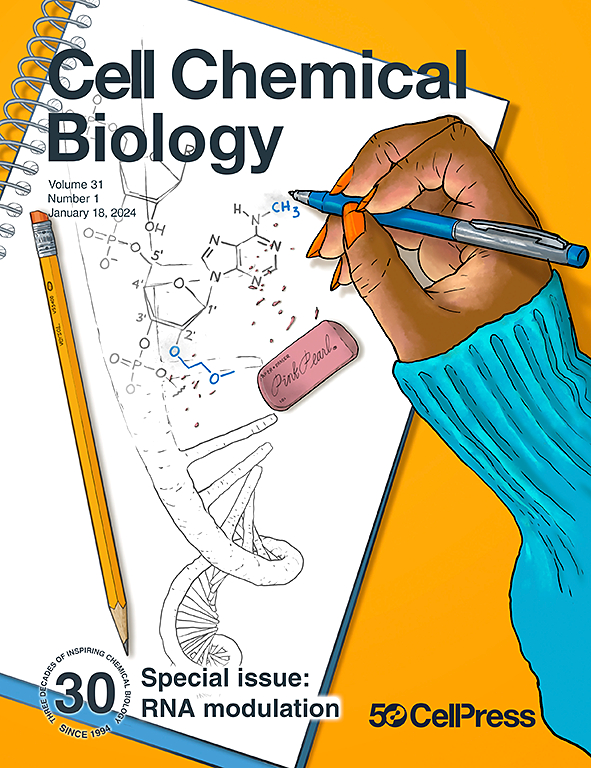Molecular mechanism of PP2A/B55α phosphatase inhibition by IER5
IF 6.6
1区 生物学
Q1 BIOCHEMISTRY & MOLECULAR BIOLOGY
引用次数: 0
Abstract
PP2A serine/threonine phosphatases are heterotrimeric complexes that execute many essential physiologic functions. These activities are modulated by additional regulatory proteins, such as ARPP19, FAM122A, and IER5. Here, we report the cryoelectron microscopy (cryo-EM) structure of a complex of PP2A/B55α with the N-terminal structured region of IER5 (IER5-N50), which occludes a surface on B55α used for substrate recruitment, and show that IER5-N50 inhibits PP2A/B55α catalyzed dephosphorylation of pTau in biochemical assays. Mutations of full-length IER5 that disrupt its PP2A/B55α interface interfere with co-immunoprecipitation of PP2A/B55α. IER5 antagonism of B55α in keratinocytes is required for expression of KRT1, a differentiation marker. Mini-IER5 composed of IER5-N50 and a nuclear localization sequence restores this activity in IER5 knockout cells. Using structural bioinformatics, we identify homology of IER5-N50 with SERTA (SEI-1, RBT-1, and TARA) domain containing proteins. These studies define the molecular basis of PP2A/B55α nuclear inhibition by IER5 and suggest a roadmap for selective pharmacologic modulation of PP2A/B55α complexes.


IER5抑制PP2A/B55α磷酸酶的分子机制
PP2A丝氨酸/苏氨酸磷酸酶是执行许多基本生理功能的异三聚体复合物。这些活性受到其他调节蛋白的调节,如ARPP19、FAM122A和IER5。在这里,我们报道了PP2A/B55α与IER5的n端结构区域(IER5- n50)的配合物的低温电镜(cro - em)结构,该结构区域封闭了B55α上用于底物招募的表面,并表明IER5- n50在生化分析中抑制PP2A/B55α催化的pTau去磷酸化。全长IER5的突变破坏其PP2A/B55α界面,干扰PP2A/B55α的共免疫沉淀。角质形成细胞中B55α的IER5拮抗作用是KRT1(一种分化标志物)表达所必需的。由IER5- n50和核定位序列组成的Mini-IER5在IER5敲除细胞中恢复了这种活性。利用结构生物信息学,我们鉴定了IER5-N50与SERTA (SEI-1、RBT-1和TARA)结构域蛋白的同源性。这些研究确定了IER5对PP2A/B55α核抑制的分子基础,并为PP2A/B55α复合物的选择性药理学调节提供了路线图。
本文章由计算机程序翻译,如有差异,请以英文原文为准。
求助全文
约1分钟内获得全文
求助全文
来源期刊

Cell Chemical Biology
Biochemistry, Genetics and Molecular Biology-Molecular Medicine
CiteScore
14.70
自引率
2.30%
发文量
143
期刊介绍:
Cell Chemical Biology, a Cell Press journal established in 1994 as Chemistry & Biology, focuses on publishing crucial advances in chemical biology research with broad appeal to our diverse community, spanning basic scientists to clinicians. Pioneering investigations at the chemistry-biology interface, the journal fosters collaboration between these disciplines. We encourage submissions providing significant conceptual advancements of broad interest across chemical, biological, clinical, and related fields. Particularly sought are articles utilizing chemical tools to perturb, visualize, and measure biological systems, offering unique insights into molecular mechanisms, disease biology, and therapeutics.
 求助内容:
求助内容: 应助结果提醒方式:
应助结果提醒方式:


